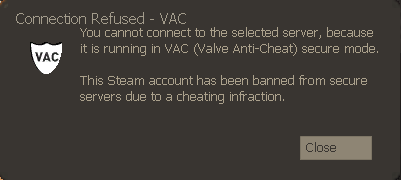Savor the Flavors: Bombay Beijing Fine Foods
Exploring the fusion of Indian and Chinese cuisines with delicious recipes and culinary tips.
Cheating Chaos: How CSGO's Anti-Cheat Battles the Dark Side of Gaming
Explore the intense showdown between CSGO's anti-cheat measures and the rise of cheaters. Uncover the dark side of gaming today!
The Evolution of Anti-Cheat Technologies in CSGO: From the Past to Present
The landscape of anti-cheat technologies in CSGO has undergone remarkable evolution since the game's release in 2012. Initially, the measures employed were rudimentary, primarily relying on manual reporting and community moderation to identify and penalize cheaters. As the player base grew, the need for more sophisticated systems became evident, leading to the introduction of Valve Anti-Cheat (VAC). This robust system aimed to automatically detect cheating software and prevent repeat offenders from accessing the game. However, even with VAC, the cat-and-mouse game between game developers and cheaters continued, prompting the need for continual advancements in technology.
In recent years, the focus has shifted towards machine learning and behavioral analysis as part of anti-cheat systems. These modern techniques utilize algorithms to monitor player behaviors and identify anomalies that indicate cheating. For instance, cheaters often exhibit patterns that deviate from average player performance. By leveraging data analytics, developers are not only able to detect cheating more efficiently but also enhance the gaming experience for legitimate players. As we look to the future, the evolution of anti-cheat technologies in CSGO promises even more innovative solutions, ensuring fair play and preserving the integrity of one of the most popular first-person shooters in the world.

Counter-Strike is a highly popular first-person shooter franchise that has captivated gamers with its team-based gameplay. Players often encounter various issues, and one common problem is when cs2 vac was unable to verify, which can disrupt the gaming experience.
Understanding VAC: How Valve's Anti-Cheat System Works
VAC, or Valve Anti-Cheat, is a robust system developed by Valve Corporation to maintain the integrity of online gaming by detecting and preventing cheating in games like Counter-Strike: Global Offensive and Dota 2. The system employs various techniques to identify cheating software, including heuristic analysis to detect known cheats and behavioral analysis to identify abnormal patterns in player movement and actions. When a player is found to be using cheat software, they receive a VAC ban, which permanently restricts them from participating in secure servers.
One of the key features of VAC is its continuous evolution to adapt to new cheating methods. The system regularly updates its detection algorithms to stay ahead of the curve, ensuring a fair gameplay experience for all users. Players are often encouraged to report suspected cheaters, which can aid in refining the system. Overall, understanding how VAC works helps players appreciate the efforts behind maintaining a cheat-free environment and reinforces the importance of fair play within the gaming community.
The Dark Side of Competitive Gaming: What Cheaters Mean for Gamers and Developers
The rise of competitive gaming has brought excitement and innovation to the gaming industry, yet it has also unveiled the dark side of competitive gaming: cheating. Cheaters undermine the integrity of fair competition, leading to frustration among players striving to improve their skills. The impact is particularly pronounced in online tournaments, where instances of cheating not only disrupt gameplay but also tarnish the overall experience for legitimate participants. As gamers become more aware of these issues, the community's trust erodes, resulting in a divided player base.
For developers, the challenge is twofold. Not only do they need to design games that promote a level playing field, but they also have to implement effective anti-cheat systems that can identify and penalize cheaters promptly. This requires ongoing investment in technology and human resources, which can strain budgets and timelines. Ultimately, the prevalence of cheating in competitive gaming not only threatens the experiences of individual players but also jeopardizes the reputation of developers who strive to foster a fair and engaging environment.